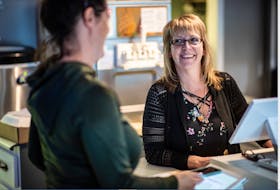During National Breast Cancer Awareness Month, we stand together in our support for a cure and our support for the women who are faced with the disease. By encouraging breast cancer research and raising awareness of the importance of early detection, we can all help save lives.
Breast cancer is the most common cancer among Canadian women (excluding nonmelanoma skin cancers). It is the second leading cause of death from cancer in Canadian women. Breast cancer can also occur in men, but it is not common.
Breast cancer is a threat to women of all ages, races and walks of life. It is estimated that about 1 in 8 Canadian women will develop breast cancer during her lifetime and 1 in 31 will die from it. These numbers remind us why it is so important to know the signs, symptoms and risk factors of breast cancer. Early detection of breast cancer is the best weapon against the disease, which means breast self-exams should be performed regularly, with clinical breast exams every one to three years. A clinical breast exam (CBE) is a thorough examination of your breasts by a trained healthcare professional. It is used to check for abnormalities. By the age of 50, women should begin getting mammograms every one to two years. In addition, healthy lifestyle habits like physical activity, not smoking, minimizing alcohol intake and consuming plenty of fresh fruits and vegetables can help women reduce their risk factors.
Know your body and get changes checked sooner rather than later. All women should be aware of what is normal for their breasts even if they get regular screening tests. Many women fi nd their own breast cancer by noticing changes in the look and feel of their breasts.
Women can become familiar with their breast tissue by looking at and feeling their breasts. In the past, experts suggested that women should do this in a certain way each month. Research shows that this isn’t necessary. There really isn’t a right or wrong way for women to examine their breasts. They just need to know the whole area of their breast tissue well enough to notice changes. This includes the entire breast area up to the collarbone and under the armpits, as well as the nipples. Tell your doctor about any unusual changes to your breasts.
For more information about breast cancer prevention, early detection and support for a cure, please visit the Canadian Cancer Society online at www.cancer.ca









